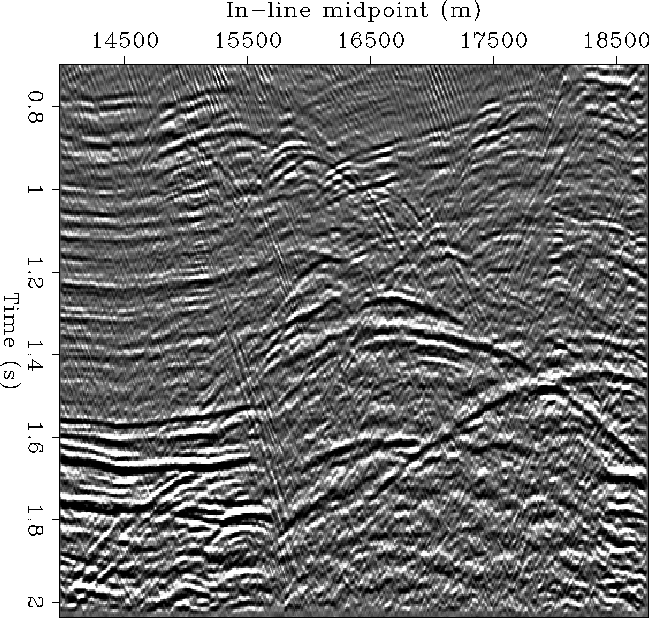 |
Figure 1 In-line section of the North Sea data set used for testing AMO
 |
The data acquisition configuration was double-source and triple streamer. The nominal common-midpoint spacing was 9.375 meters in the in-line direction, and 25 meters in the cross-line direction. The cable length was 2,200 meters, with maximum feathering of approximately 17 degrees. To make the data handling and processing quicker, we processed only a subset of the whole data set. We windowed in time the data traces up to 512 time-samples, for a maximum time of 2.044 seconds. We selected the central 512 midpoints in the in-line direction, for a total length of 4,800 meters, and 130 midpoints in the cross-line, for a total width of 3,250 meters. Figure 2 shows the offset-azimuth distribution of a small subset of the data traces. As it is typical for such acquisition geometry, it shows six distinct trends, most distinguishable at small offsets, that correspond to each possible source-streamer pair.
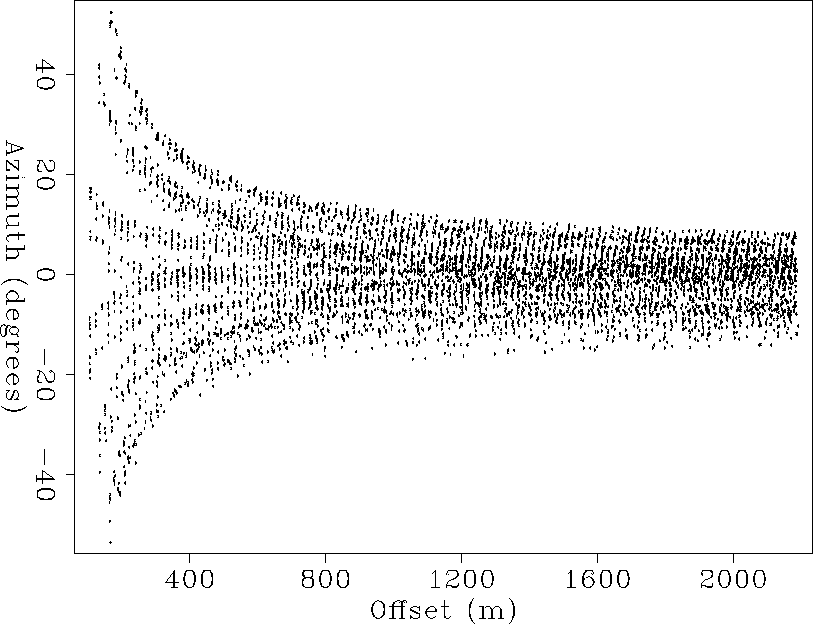 |
We performed our test on a subset of the input traces. We selected all the traces with the offset in the range between 800 m and 1,200 meters. We applied two distinct partial stacking methods to this subset: NMO followed by binning and partial stacking and NMO followed by AMO and partial stacking. In both cases the output data were a regularly sampled cube with nominal offset of 1,000 meters and zero azimuth. To achieve as high accuracy as possible, the binning operation laterally interpolated the traces in the midpoint direction while stacking them into the output cube.
The number of input traces was about 460,000, while the output cube had 512 midpoints in the in-line direction, and 130 in the cross-line, for a total of 66,560 output traces. Therefore, the data reduction rate achieved by partial stacking is approximately 7.
Before processing the data, we applied a hyperbolic mute with a sharp cut-off. The mute velocity was slightly lower than water velocity, to assure the removal of the first arrival and some severely aliased noise at the far-offset. After muting, we applied NMO using a velocity function varying with midpoint and time. The NMO velocity function was given to us by Conoco together with the data. No inverse NMO was applied to the results before displaying, thus the reflection timings are equivalent ``zero-offset'' times. Of course, inverse NMO ought to be applied prior to inputting the AMO results into a prestack depth migration. Since we have not a 3-D prestack Kirchhoff depth migration program available yet, we have not completed the proposed prestack imaging flow; we plan to do that in the near future.
Figure 3 shows a comparison of the results obtained using the two flows described above. The Figure displays a window of an in-line section, located at 19,590 meters along the cross-line axis, and centered on the fault blocks where the data show numerous high-frequency diffractions. Figure 3a shows the section obtained by simple NMO and binning, while Figure 3b shows the results of AMO. As expected, the addition of AMO to the partial stacking process preserves the diffractions much better than simple NMO. Figure 3c shows the differences between the two sections; the diffractions are clearly evident. Figure 4 shows a similar comparison to that in Figure 3 but for the in-line location at 20,790. In this case also, the diffractions are better preserved by the addition of AMO. For both sections, AMO not only preserves the diffractions, but also decreases the amount of uncoherent noise. This effect is barely noticeable on paper plots, but it is quite evident on the computer screen. A possible explanation for this phenomenon is that the uncoherent stacking of the diffractions, and of other steeply dipping reflections, contributes to the general level of background noise in the data obtained by simple NMO-and-binning.
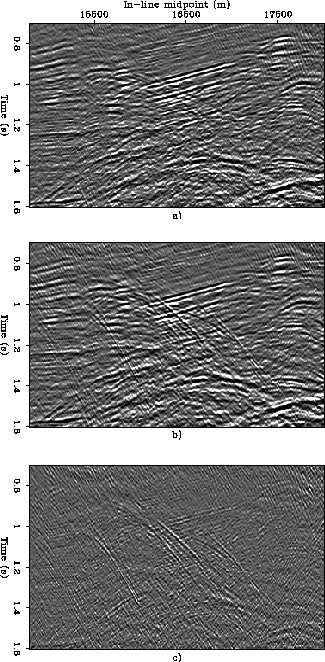 |
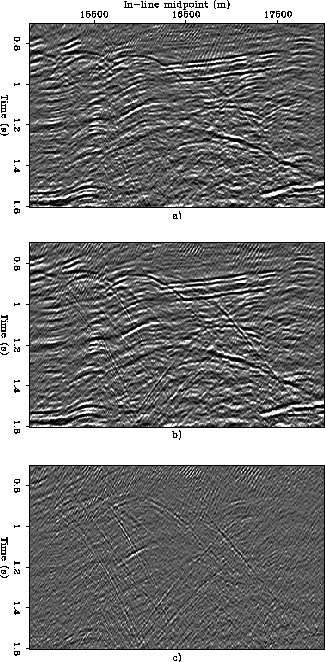 |
The next Figure (Figure 5) shows time slices cut at 1.068 seconds. As for the Figures above, Figure 5a shows the results of NMO and binning, while Figure 5b shows the results of AMO. The difference section (Figure 5c) clearly shows that few trends of high-frequency diffractions were not correctly preserved using the conventional process. The most evident differences tend to occur for reflections that are oriented at an angle with respect to the in-line direction. This observation is consistent with the fact that the conventional NMO-and-binning process is most inaccurate for reflection oriented at an angle of 45 degrees with respect to the nominal azimuth. Although there are not many of such reflections in this data set, which shows geological dips mostly aligned along the in-line directions, the AMO process enhances the ones that are present.
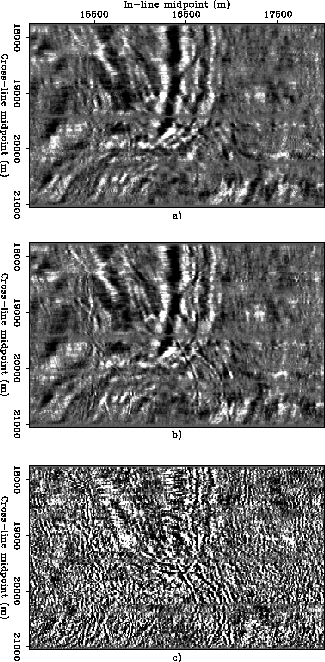 |
Figure 6 shows windows of an in-line section located at 20,940 meters and centered around the salt flank reflection visible in the lower-left corner of Figure 1. The dipping salt flank reflection is better preserved by the application of AMO. Further, as for the shallower section, also some midly dipping reflections appear to be ``cleaner'' after AMO.
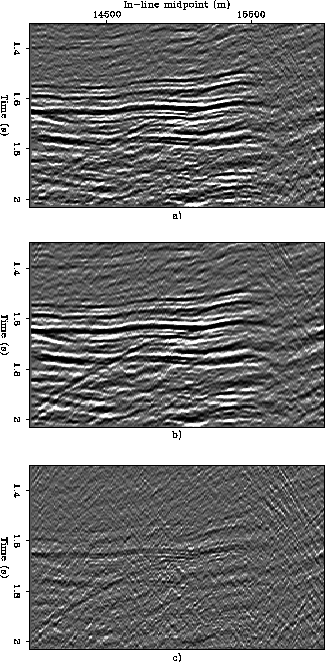 |